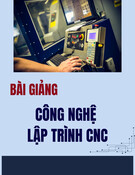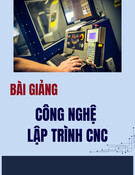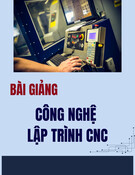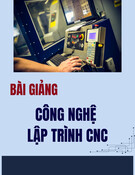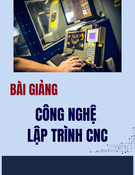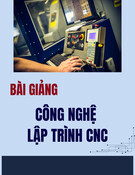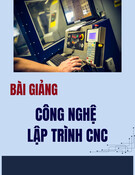
Section 2: DESCRIPTION OF TEST PROGRAMS
2.1 MIRAMAR #1 Hush-House. In 1973, a joint Navy-industry team was
formed to determine the feasibility of developing a complete aircraft
enclosure (hush-house) for the F-14A with a dry-cooled, sound suppressing
exhaust system. The team reviewed available literature (refer to Aero-Thermal
and Acoustical Data from the Postconstruction Checkout of the Miramar #2 El
Toro Hush-House, J.L. Grunnet and I.L. Ver [1]) pertinent to dry-cooled
exhaust systems and visited existing European dry-cooled hush-houses.
Diagnostic tests on an F-4 semi-enclosure type of exhaust sound suppressor
(refer to Observation of Fluidynamic Performance of Miramar NAS F-4,
Acoustical Enclosure and Recommendations for Improvement, J.L. Grunnet [2])
and recommendations were a part of the team's initial responsibility.
Modifications to the augmenter entrance, the waterspray pipes, the augmenter
tube, and the perforated diffuser were recommended to improve pumping and
reduce the recirculation of hot exhaust gases within the semi-enclosure. The
design of the initial F-14A hush-house at NAS Miramar, California was then
undertaken. Typical of most of the aircraft and engine runup enclosures that
the team designed, the design was to meet the following criteria:
a) The facility must accept a variety of aircraft/engines.
b) The facility exhaust system is to be dry-cooled.
c) The engine inlet approach velocity shall be no greater than 50
f/s (15.24 m/s).
d) The maximum noise level around the aircraft/engine shall be no
greater than 2 dBA above the corresponding noise during open
field runup over a concrete pad or apron.
e) The exterior noise level shall be no greater than 85 dBA at 250
ft (76.2 m) from the engine nozzle exit, with one engine at
maximum afterburner or two engines at military power.
f) The maximum exhaust system material temperature shall not exceed
800 deg. F (427 deg. C).
After the design of the first F-14A hush-house (Miramar No. 1) was complete, a
1/15 scale model test program was initiated to both verify the Miramar hush-
house exhaust system design and provide general design information (refer to
Aerodynamic and Acoustic Tests of a 1/15-Scale Model Dry-Cooled Jet Aircraft
Quasar Noise Suppressions System, J.L. Grunnet and I.L. Ver [3]). The model
included a properly scaled acoustical treatment. Tests were run at a model
exhaust total temperature of 3000 deg. F (1649 deg. C) giving meaningful
aero-thermo and acoustic data. The results indicated that the outdoor noise
limit of 85 dBA at 250 ft from the nozzle exits would be met with one F-14
engine in maximum afterburner; however, even with an aligned aircraft, the
augmenter wall temperature will reach 1000 deg. F (538 deg. C). These
predictions were subsequently verified in the 1975 full-scale checkout of the
Miramar No. 1 hush-house, according to this research. The higher than
specified augmenter wall temperature necessitated a structural review of the
augmenter design to verify that it can withstand local wall temperatures of
1000 deg. F.
3
Simpo PDF Merge and Split Unregistered Version - http://www.simpopdf.com

2.2 Miramar No. 2 and El Toro Hush-Houses. Next, designs for the second
N.A.S. Miramar F-14 hush-house (Miramar No. 2) and an F-4, A-6 hush-house for
MCAS El Toro, California were completed. The important changes between
Miramar No. 1 and No. 2 included better faring of the door air inlet, a door
outlet screen to reduce flow separation on the turning vanes, sound absorptive
panels surrounding the augmenter inlet and nonperforated inconel panels in the
hottest locations on the augmenter duct sidewalls. These facilities were
checked out in 1978 and 1979, respectively, and the results were presented in
Reference [1]. Prior to full-scale facility checkout, 1/11.4 scale model
tests were run to verify that the A-6 exhaust can be captured by a 19 ft wide
x 11 ft high augmenter entrance (refer to Aero and Thermodynamic Test of a
1/11.4-Scale Hush-House Augmenter Inlet, J.L. Grunner and J.H. Berger [10]).
2.3 NARF Norfolk Depot Test Cell Diagnostic Tests. TF-30P412/414
engines run up to maximum afterburning in the NARF Norfolk, Virginia depot
cells 13 and 14 (refer to NARF-NORVA Test Cells 13 and 14 Diagnostic Tests and
Recommendations, J.L. Grunnet [4]) gave an indication of excessive turbine
station vibration while they would meet vibration limits in the older cells
next door. Noise buildup in the reverberant cell enclosure was responsible
for the high measured vibration level. Some improvement was obtained by
moving the engine as far AFT as the mounting would allow, thus minimizing the
axial distance between the engine nozzle exit and the augmenter throat and
thereby reducing the cell interior noise level.
2.4 NATC Patuxent River Hush-House. Design of a hush-house type test
and evaluation facility for NATC Patuxent, Maryland began in 1977. This
facility had to accommodate the S-3A as well as the F-14A. In addition it had
to provide a mist free environment with the aircraft enclosure and a maximum
engine inlet approach velocity within the enclosure of only 30 f/s (9.1 m/s).
These things necessitated the incorporation of a secondary air inlet located
above the augmenter entrance. Model tests were run to verify acceptable flow
capture with the S-3A (refer to 1/15-Scale Cold-Flow Model Tests of the
Patuxent River Hush-House Configuration, J.L. Grunnet [11]) and to check
augmentation and "cell" depression. Adequate performance was indicated. In
1983, after completion of the facility a complete full-scale checkout was run
(Refer to Aero-Thermo and Acoustical Data from the Postconstruction Checkout
of a Hush-House Located at NATC Patuxent River, MD, J.L. Grunnett [9]).
2.5 Test Cell Emissions Study. For a number of years the Navy has been
striving to meet local district restrictions on test cell and hush-house
exhaust plume opacity. In 1980, this culminated in a study of factors
effecting exhaust plume opacity. The study included both full-scale observa-
tions and model-scale tests. A number of guidelines for exhaust system design
were derived for minimizing plume opacity (refer to Phase I Report - The
Effect of Test Cell Exhaust System Design on Exhaust Plume Opacity- Analysis
and Observations and Phase II and III Report - The Effect of Test Cell Exhaust
System Design on Exhaust Plume Opacity--Model-Scale Plume Opacity Tests and
Design Procedures to Minimize Opacity, J.L. Grunnet and W.H. Phillips [5,12].
2.6 Miramar Hush-House Augmenter Failure Study. Long term operation of
the Miramar Numbers 1 and 2 hush-houses began to produce structural failures
in the augmenter sidewalls near the upstream end. This was believed to be due
to high wall temperatures during operation of misaligned F-14A aircraft in
maximum afterburner. Full-scale F-14A tests were run with various degrees of
4
Simpo PDF Merge and Split Unregistered Version - http://www.simpopdf.com

lateral misalignment (refer to A Study of Structural Failures in the
Hush-Houses at NAS Miramar, J.L. Grunnet and G. Getter [6]). The maximum
augmenter wall temperatures were indeed sensitive to misalignment. Suggested
ways of reducing the structural damage included:
a) better F-14A alignment
b) fiberglass pillows more tightly packed
c) better placement of the unperforated Inconel augmenter face
sheets
d) application of stress relief slots in certain augmenter section
aft bulkheads.
Methods of reducing the maximum augmenter wall temperature through
application of an augmenter inlet forcing cone or flare were checked at
model-scale during 1983 (refer to 1/15 Scale Model Tests of a Forcing Cone
Augmenter Pickup for Hush-Houses and Test Cells and Holt Flow Model Tests of a
1/15 Scale Hush-House with Augmenter Flare and Forcing Cone Flow Pickups, both
by T.F. Buckley and T.J. McDonald [14, 15]). An augmenter flare, such as
incorporated in the Patuxent River augmenter, resulted in significantly lower
wall temperatures. During the Patuxent River hush-house checkout, both
engines of the F-14 were run up to maximum afterburning thrust without damage
to the exhaust system.
2.7 MCAS Cherry Point Pegasus Demountable Cell Tests. In 1982,
diagnostic tests of the F402 Pegasus engine in the A/E 32T-15 engine test
enclosure (demountable test cell) were performed at MCAS Cherry Point, North
Carolina (refer to Aerodynamic Measurements Mode in the Marine A/E 32T-15
Engine Test Enclosure at Cherry Point (F-402-2), Relative to Pegasus
Acceleration Lay and Subsequent Conclusions and Recommendations, J.L. Grunnet
[7]). An apparent engine acceleration lag was being encountered such that
acceleration time specs could not always be met. Checks were made of the fuel
system, cell enclosure flow field etc, and it was concluded that the fan inlet
distortion was larger than desirable. It was finally discovered that a
tachometer circuitry problem was responsible for the indicated lag, but
changes to improve the cell flow were recommended anyway.
2.8 AV-8 Harrier Hush-House Model Tests. In 1982, a 1/15 scale model of
a Harrier hush-house was tested to verify adequate flow pickup and to
determine augmenter pumping (refer to 1/15-Scale Cold-Flow Model Tests of a
Hush-House with Simulated AV-8 Aircraft Exhaust, J.H. Berger and J.L. Leuck
[13]). Reasonably good flow pickup was demonstrated over the whole range of
nozzle vector angles from 0deg. F to 98 deg. F (-18 deg. C to 37 deg. C).
Augmentation ratio remained relatively constant at 3.5 over the entire range
of nozzle vector angles. Since the date of the model tests a full-scale
Harrier hush-house design has been completed.
2.9 NAS Dallas Test Cell. In 1979, a jet engine test cell was designed
for N.A.S. Dallas incorporating the dry-cooled sound absorptive augmenter
exhaust system concept. This was checked out in 1983 (refer to Aero-Thermo
Checkout of NAS Dallas Dry-Cooled Jet Engine Test Cell, J.L. Grunnet and N.C.
Helm [8]). External noise limits were exceeded and this has resulted in
consideration of alternative augmenter inlet designs which avoid noise
generation.
5
Simpo PDF Merge and Split Unregistered Version - http://www.simpopdf.com

Results of most checkout and model tests run to date were summarized in Model
Test and Full-Scale Checkout of Dry-Cooled Jet Runup Sound Suppressers, J.L.
Grunnet and E. Ference [16]. This reference contains additional historical
background and more detail regarding hush-house sound supression.
6
Simpo PDF Merge and Split Unregistered Version - http://www.simpopdf.com

Section 3. AIRCRAFT AND ENGINE DATA
3.1 Aircraft Propulsion Systems and Geometrical Data. The hush-houses
built to date accommodate a wide range of aircraft types. Information
regarding each aircraft to be accommodated is essential in the design of the
enclosure and its exhaust system. Table 2 relates each aircraft type to its
propulsion system characteristics. This information is essential in
establishing total enclosure and inlet flow rates as well as maximum exhaust
temperatures. Table 3 presents important aircraft geometrical information
related to hush-house and augmenter pickup sizing. In every case the engine
exhaust plane must be at least 4 ft (1.22 m) forward of the augmenter inlet.
7
Simpo PDF Merge and Split Unregistered Version - http://www.simpopdf.com








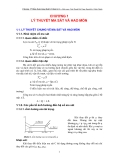


![Bài tập tối ưu trong gia công cắt gọt [kèm lời giải chi tiết]](https://cdn.tailieu.vn/images/document/thumbnail/2025/20251129/dinhd8055/135x160/26351764558606.jpg)




